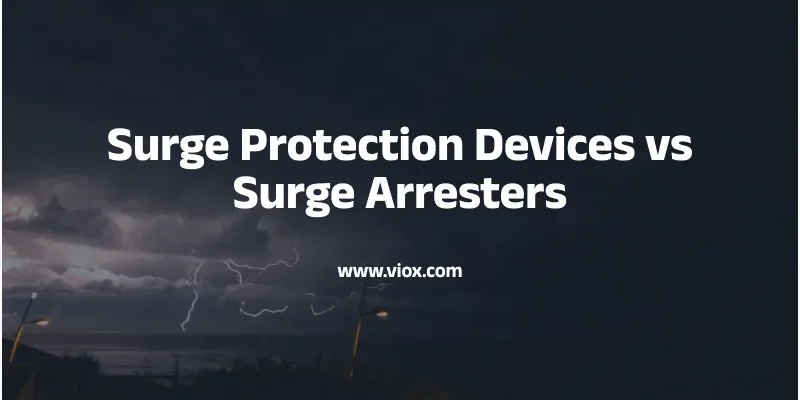Lightning strikes Earth approximately 100 times every second, generating billions of volts that can devastate electrical systems in milliseconds. Yet despite this constant threat, many facility managers and electrical professionals remain unclear about the critical differences between surge protection devices and surge arresters—a confusion that can cost thousands in equipment damage and downtime.
While both technologies protect against electrical surges, surge protection devices and surge arresters serve fundamentally different roles in electrical protection systems. Understanding when to use each device isn’t just about technical specifications—it’s about implementing the right protection strategy for your specific application, whether you’re safeguarding a residential panel or protecting a multi-million dollar industrial facility.
This comprehensive guide clarifies the technical distinctions, applications, and selection criteria that electrical professionals need to make informed protection decisions.
Understanding Surge Protection Fundamentals
What Are Electrical Surges and Their Sources
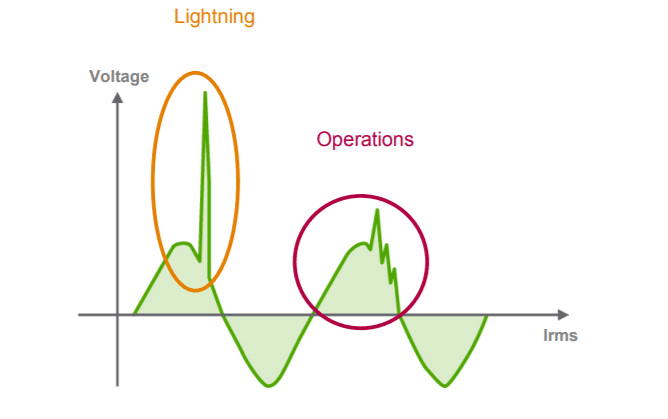
Electrical surges are temporary increases in voltage that exceed the normal operating parameters of electrical systems. These voltage spikes can range from minor fluctuations to catastrophic events exceeding 10,000 volts.
Primary surge sources include:
- Lightning-induced surges: Direct and indirect lightning strikes creating voltage spikes up to 1 billion volts
- Switching surges: Equipment cycling on/off, particularly motors and transformers
- Utility switching operations: Grid reconfiguration and capacitor bank switching
- Power quality disturbances: Voltage sags, swells, and harmonic distortion
The economic impact is staggering. According to industry data, electrical equipment damage from surges costs U.S. businesses over $26 billion annually, with average repair costs ranging from $10,000 to $50,000 per incident for commercial facilities.
Primary vs Secondary Protection Systems
Modern surge protection follows a coordinated protection philosophy using multiple layers:
Primary protection handles high-energy surges at the service entrance, while secondary protection manages residual surges that penetrate the first line of defense. This layered approach ensures that no single device bears the full burden of surge protection.
The key principle: Primary devices must coordinate with secondary devices to create seamless protection without interference between protection levels.
What Is a Surge Arrester? (Technical Deep Dive)
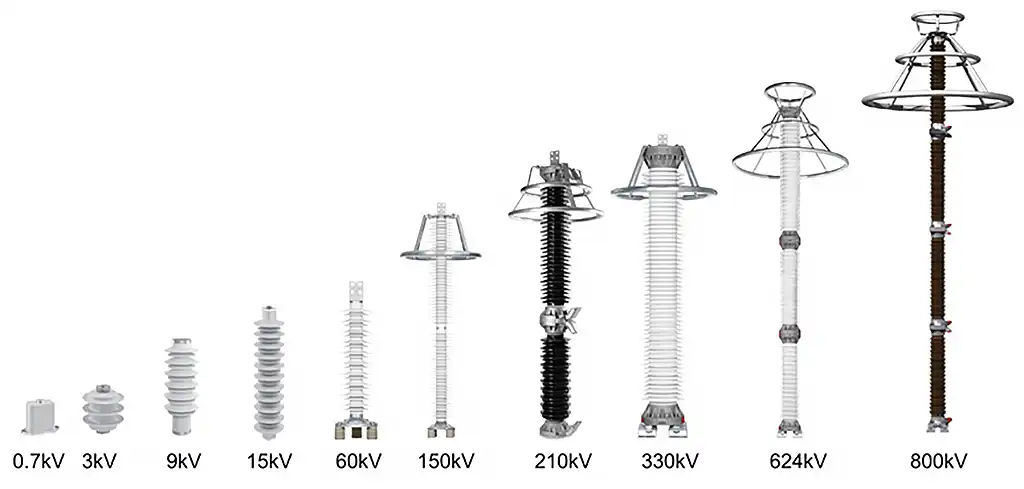
Surge Arrester Working Principles
A surge arrester is a device electrically connected between the conductor and earth in close proximity to the equipment it protects. These devices operate using metal oxide varistor (MOV) technology သို့မဟုတ် gas discharge tube (GDT) principles.
MOV Technology: Metal oxide varistors contain zinc oxide ceramic material that exhibits non-linear resistance characteristics. Under normal voltage conditions, the MOV presents extremely high resistance (several hundred megohms). When surge voltage exceeds the threshold, resistance drops dramatically to milliohms, creating a low-impedance path to ground.
GDT Technology: Gas-filled surge arresters operate on arc discharge principles, acting as voltage-dependent switches. When applied voltage exceeds spark-over voltage, an arc forms within the sealed discharge chamber in nanoseconds.
Surge Arrester Types and Classifications
Station Class Arresters (3kV-684kV)
Station class arresters offer the best discharge voltages and highest faulty current withstand capability among all arrester types. These robust devices protect critical infrastructure:
- Substations and switchyards
- Power generation facilities
- Industrial facilities with high-voltage equipment
- Critical infrastructure requiring maximum protection
Technical specifications include discharge current capabilities exceeding 65kA (8/20μs) and energy handling up to 10kJ/kV.
Intermediate Class Arresters
Designed for medium-voltage applications between 1kV and 36kV:
- Small substations and distribution systems
- Underground cable protection
- Industrial plant distribution
- Commercial facility service entrances
Distribution Class Arresters
The most common arrester type for utility applications:
- Pole-mounted transformer protection
- Overhead line protection
- Service entrance surge protection
- Rural electrical system protection
Key Technical Specifications
Voltage Ratings and MCOV (Maximum Continuous Operating Voltage): Arresters have multiple voltage levels, ranging from 0.38kV low voltage to 500kV UHV, with MCOV typically 80-85% of rated voltage.
Discharge Current Capabilities:
- 8/20μs currents: 1.5kA to 100kA (standard surge testing)
- 10/350μs currents: 2.5kA to 100kA (lightning current simulation)
Energy Handling: Modern arresters handle 2-15kJ/kV depending on class and application requirements.
What Are Surge Protection Devices (SPDs)?
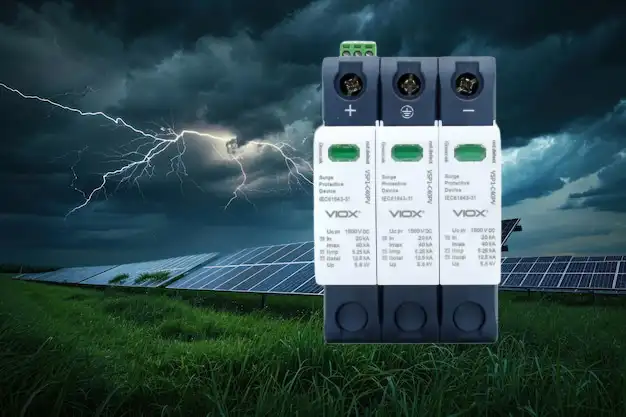
SPD Technology and Components
တစ် surge protective device (SPD) is a protective device for limiting transient voltages by diverting or limiting surge current and is capable of repeating these functions as specified.
Advanced Features distinguishing SPDs:
- Hybrid protection circuits combining MOVs with GDTs
- EMI/RFI filtering capabilities for electromagnetic interference
- Monitoring and diagnostic features with visual status indicators
- Internal fusing and safety mechanisms for overload protection
Surge protectors have monitoring capabilities to detect internal malfunctions and react accordingly, while arresters do not.
SPD Classification System
Type 1 SPDs (Service Entrance Protection)
Type 1 SPDs are permanently connected, intended for installation between the secondary of the service transformer and the line side of the service disconnect overcurrent device.
အပလီကေးရှင်းများ
- Industrial building service entrances
- Critical facility main panels
- Direct lightning exposure areas
- Coordinated protection system origins
Technical Requirements:
- 10/350μs lightning current handling (2.5kA minimum)
- No external overcurrent protection required
- Can handle both indirect and direct lightning effects
Type 2 SPDs (Distribution Level Protection)
Type 2 SPDs are permanently connected, intended for installation on the load side of the service disconnect overcurrent device, including branch panel locations.
Primary applications:
- Branch panel boards and subpanels
- မော်တာထိန်းချုပ်ရေးစင်တာများ
- Sensitive equipment distribution
- Computer room electrical panels
Technical specifications:
- 8/20μs surge current handling (typically 20kA-100kA)
- Requires coordination with upstream protection
- Optimized for induced lightning and switching surges
Type 3 SPDs (Point-of-Use Protection)
Type 3 SPDs are point-of-utilization devices installed at a minimum conductor length of 10 meters (30 feet) from the electrical service panel.
Typical installations:
- Individual equipment protection
- Computer workstations
- Sensitive instrumentation
- Final protection layer
Critical Differences: Surge Arresters vs Surge Protection Devices
Here’s what separates these two protection technologies:
Voltage Rating Comparisons
| သတ်မှတ်ချက် | Surge Arresters | ရေလှိုင်းကာကွယ်ရေး ကိရိယာများ |
|---|---|---|
| ဗို့အားအကွာအဝေး | 0.38kV – 500kV+ | ≤1.2kV typical |
| Primary Use | High-voltage electrical systems | Low-voltage electronic applications |
| တပ်ဆင်ခြင်းတည်နေရာ | Outdoor/primary systems | Indoor/secondary systems |
| Current Handling | 10kA – 100kA+ | 5kA – 80kA |
| တုံ့ပြန်ချိန် | နာနိုစက္ကန့်များ | Nanoseconds to microseconds |
| Monitoring Features | Limited/external counters | Built-in status indication |
Protection Scope and Applications
Surge Arresters protect:
- Electrical equipment like panel boards, circuits, wiring and transformers in manufacturing and industry situations
- Primary electrical systems
- Utility infrastructure
- High-voltage equipment
SPDs protect:
- Sensitive electronics and solid-state components in commercial, industrial, manufacturing and residential settings
- Secondary electrical systems
- Electronic instrumentation
- Computer and communication equipment
Current Handling Capabilities
Lightning arresters have larger relative flow capacity because their main role is preventing lightning overvoltage, while SPDs have generally smaller through-flow capacity.
Why this matters: Arresters face direct lightning exposure requiring massive current handling, while SPDs handle residual surges after upstream protection limits the energy.
Monitoring and Diagnostic Features
SPD advantages:
- Real-time status monitoring with LED indicators
- Remote monitoring compatibility
- Audible and visual failure alarms
- EMI/RFI filtering capabilities that arresters lack
Arrester limitations:
- Primarily passive protection
- External surge counters available on premium models
- Visual inspection required for status assessment
When to Use Surge Arresters vs Surge Protection Devices
Industrial and Utility Applications
Choose Surge Arresters for:
Power Generation Facilities:
- Generator protection from switching surges
- Transformer protection in switchyards
- Transmission line protection systems
- Critical infrastructure hardening
Substations and Switchyards:
- Power stations, lines, distribution stations, power generation, capacitors, motors, transformers, iron and steel smelting, and railways
- High-voltage equipment protection
- Utility-grade lightning protection
- Grid stability maintenance
Manufacturing Plants:
- Large motor protection
- Process control system hardening
- Production line equipment protection
- Facility-wide electrical protection
Commercial and Residential Applications
Choose SPDs for:
Office Buildings and Hospitals:
- Low-voltage power distribution, cabinets, low-voltage electrical appliances, communications, signals, machine stations, and machine rooms
- Computer network protection
- Medical equipment protection
- အလိုအလျောက်စနစ်များတည်ဆောက်ခြင်း။
Residential Panel Protection:
- Whole-house surge protection
- Sensitive appliance protection
- Home office equipment protection
- Smart home device protection
Data Centers and Critical Facilities:
- Server equipment protection
- UPS system coordination
- Network infrastructure protection
- Precision cooling equipment protection
Selection Criteria Decision Matrix
Use this framework for protection decisions:
- System Voltage Assessment:
- >1kV: Consider surge arresters
- <1kV: Evaluate SPDs first
- Protection Coordination Requirements:
- Primary protection: Surge arresters
- Secondary/final protection: SPDs
- Equipment Criticality Analysis:
- Industrial equipment: Arresters
- Electronic devices: SPDs
- Environmental Considerations:
- Outdoor exposure: Arresters
- Indoor applications: SPDs
- Monitoring Requirements:
- Status indication needed: SPDs
- Passive protection acceptable: Arresters
Installation Requirements and Best Practices
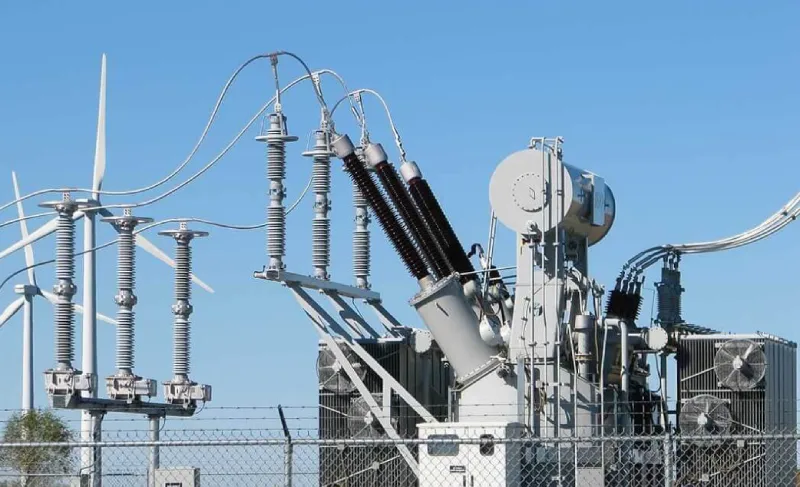
Surge Arrester Installation Guidelines
Grounding System Requirements:
- Install as close as possible to protected equipment
- Dedicated grounding electrode preferred
- Ground resistance <5 ohms recommended
- Straight ground leads minimize inductance
Environmental Considerations:
- Locate away from combustible or energized parts due to hot gas discharge potential
- Adequate ventilation for arc interruption
- Weather protection for outdoor installations
- Seismic considerations in earthquake zones
SPD Installation Standards
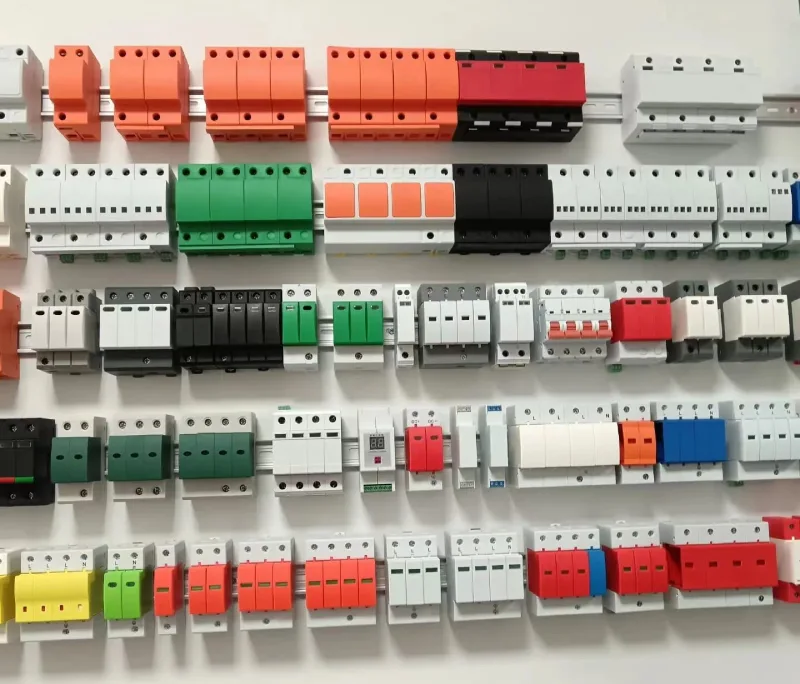
NEC Article 285 Compliance:
- Proper overcurrent protection coordination
- Grounding electrode system connection
- Conductor sizing per amperage requirements
- Installation location specifications
UL 1449 Certification:
- The standard let-through voltage for 120V AC devices is 330 volts
- VPR (Voltage Protection Rating) verification
- Short circuit current rating compliance
- Nominal discharge current capability
Common Selection Mistakes and How to Avoid Them
Critical errors that compromise protection:
Voltage Rating Mismatches:
Wrong device voltage ratings create protection gaps or device failure. Always verify system voltage against device specifications.
Inadequate Current Handling:
Undersized devices fail during major surge events. Calculate worst-case surge currents for proper sizing.
Poor Protection Coordination:
Devices competing instead of cooperating. Ensure upstream devices operate before downstream protection.
Installation Location Errors:
- SPDs too far from protected equipment lose effectiveness
- Arresters too close to equipment create safety hazards
Maintenance Neglect:
Both technologies require periodic inspection and testing to maintain protection integrity.
Cost-Benefit Analysis: Making the Right Investment
Initial Equipment Costs
Surge Arrester Investment:
- Distribution class: $150-$800
- Intermediate class: $500-$2,500
- Station class: $2,000-$15,000+
SPD Investment:
- Type 3: $25-$200
- Type 2: $200-$1,500
- Type 1: $400-$3,000
စုစုပေါင်းပိုင်ဆိုင်မှုကုန်ကျစရိတ်
Installation complexity factors:
- Arresters require electrical contractor expertise
- SPDs offer plug-and-play installation options
- Coordination studies add engineering costs
Long-term value considerations:
- Equipment replacement costs without protection
- Business interruption during surge events
- Insurance premium reductions with proper protection
- Regulatory compliance requirements
ROI Calculation: Most installations achieve payback within 2-3 years through damage prevention and reduced insurance costs.
Surge Protection Technology ၏ အနာဂတ်ရေစီးကြောင်းများ
Smart Monitoring Integration: IoT-enabled devices provide real-time protection status, predictive maintenance alerts, and surge event logging.
Advanced Materials Development: New MOV formulations offer improved energy handling and longer service life, while GDT technology advances reduce response times.
ပြန်လည်ပြည့်ဖြိုးမြဲစွမ်းအင် ပေါင်းစပ်မှု- Solar and wind installations require specialized protection strategies addressing DC surge characteristics and grounding challenges.
Electric Vehicle Infrastructure: High-power charging stations demand robust surge protection due to switching transients and grid interaction effects.
Selecting the Right Protection Strategy
The choice between surge protection devices and surge arresters isn’t about finding the “better” technology—it’s about implementing the right protection strategy for your specific application. Surge arresters excel at primary protection for electrical systems, while SPDs provide superior secondary protection for electronic equipment.
For electrical systems above 1kV with outdoor exposure, surge arresters offer the robust protection needed to handle direct lightning strikes and switching surges. For sensitive electronics and indoor applications, SPDs provide the precise protection, monitoring capabilities, and filtering required for reliable operation.
The most effective protection strategies often combine both technologies in coordinated systems that provide comprehensive coverage from service entrance to point-of-use applications.
Ready to protect your electrical systems? Consult with qualified electrical professionals to assess your specific requirements and develop a protection strategy that matches your application needs, budget constraints, and reliability requirements. The investment in proper surge protection pays dividends through reduced equipment damage, minimized downtime, and peace of mind knowing your systems are properly protected.
အမေးများသောမေးခွန်းများ (FAQ)
What’s the main difference between surge arresters and surge protection devices?
Surge arresters are designed for primary electrical systems and high-voltage applications (0.38kV to 500kV+), typically protecting electrical equipment like transformers and switchgear. Surge protection devices (SPDs) are designed for secondary systems and low-voltage applications (≤1.2kV), protecting sensitive electronics and microprocessor-based equipment.
The key distinction: surge arresters are primary devices, while surge protectors are a secondary system.
Can I use a surge arrester as a surge protector?
A surge arrester can be used as a lightning arrester but a lightning arrester can’t be used as a surge arrester. However, surge arresters are oversized and inappropriate for typical low-voltage electronics protection. SPDs offer better suited protection with monitoring capabilities, EMI/RFI filtering, and precise voltage clamping for sensitive equipment.
Which lasts longer – surge arresters or surge protectors?
Surge protectors have a much longer life expectancy than surge arresters. With proper maintenance and sizing, a surge protector may last up to 25 years. Surge arresters tend to last around three to five years. If you experience frequent surges, their life spans are closer to two years.
What does Type 1, Type 2, and Type 3 SPD mean?
Type 1 SPDs are permanently connected, intended for installation between the secondary of the service transformer and the line side of the service disconnect overcurrent device (service equipment), handling direct lightning strikes.
Type 2 SPDs are permanently connected, intended for installation on the load side of the service disconnect overcurrent device (service equipment), including brand panel locations, protecting against residual surges and motor-generated events.
Type 3 SPDs are point-of-utilization SPDs installed at a minimum conductor length of 10 meters (30 feet) from the electrical service panel to the point-of-utilization.
Do surge protectors protect against direct lightning strikes?
Surge arresters can only protect against induced transients characteristic of a lightning discharge’s rapid rise-time, and will not protect against electrification caused by a direct strike to the conductor. Surge protection does offer enhanced protection when lighting strikes. However, surge protectors alone cannot 100% protect your devices. The only way to ensure 100% protection is to unplug everything.
Bottom line: Neither device provides 100% protection against direct lightning strikes to the conductor itself.
What’s the difference between TVSS and SPD?
Up until the third edition of the ANSI/UL 1449 standard was introduced and put into effect in 2009 there were various terms used when referencing devices intended to limit the effects of transient surge events. SPDs were previously known as Transient Voltage Surge Suppressors (TVSS) or secondary surge arrestors (SSA). Secondary surge arrestor is a legacy term (often used by utilities) and is used most commonly for a device that has not been certified to ANSI/UL 1449. In 2009, after the adoption of ANSI/UL 1449 (3rd Edition), the term Transient Voltage Surge Suppressor was replaced by Surge Protective Device.
Should I plug my refrigerator into a surge protector?
Most refrigerator manufacturers do not recommend using a surge protector. This is because a refrigerator has a compressor that is sensitive to temperature. When a surge occurs, the refrigerator itself will shut off and then restart. By using a surge protector, it can get in the way of this system. A better solution would be a whole house surge protector.
How much does surge protection cost?
Residential whole-house surge protection: The cost to have a whole-home surge protector ranges from $300 to $750 dollars. The price depends on if you have a sub panel already, the type of surge protector you use, the warranty of the surge protector and the electrician hired.
Commercial/Industrial costs vary significantly:
- Type 3 SPDs: $25-$200
- Type 2 SPDs: $200-$1,500
- Type 1 SPDs: $400-$3,000
- Distribution class arresters: $150-$800
- Station class arresters: $2,000-$15,000+
What’s the proper grounding requirement for surge protection?
As a rule of thumb, an effective ground for lightning and surge protection purposes should be somewhere around 10 ohms. Obviously this can be difficult to reach in poor soil conditions and a cost benefit relationship comes into play. However, note that the soil water content can vary as much as 50%, depending on the season of the year.
Can I fill all outlets on a surge protector power strip?
A surge protector can have multiple outlets. However, it is not always advisable that you fill in every outlet. This is because you could trip a breaker, which means disconnecting the circuit. This is especially important when you are using a surge protector on large devices such as heaters and TVs. Therefore, limit the number of large devices on one surge protector.
Do I need surge protection for data lines too?
Although it may appear to be so from a regulatory point of view, surges can actually enter through any conductor that enters the equipment: … Each type of line has its own suitable surge protector, so the equipment is considered to be fully protected against surges if there is protection for both power supply lines and data lines.
ဟုတ်ကဲ့ – comprehensive protection requires SPDs for power lines AND data/communication lines.
What’s the response time difference between arresters and SPDs?
Both technologies respond in nanoseconds, but the ability of an SPD or surge component to respond to a voltage which exceeds its “turn-on” or “clamping” threshold, will govern the residual measured limiting voltage which the downstream equipment will be required to withstand. The key difference isn’t speed but the precision of voltage clamping and additional features like EMI/RFI filtering.
ဆက်စပ်
Surge Protection Device (SPD) ဆိုတာ ဘာလဲ
မင်းရဲ့ ဆိုလာစွမ်းအင်စနစ်အတွက် မှန်ကန်တဲ့ SPD ကို ဘယ်လိုရွေးချယ်မလဲ။

